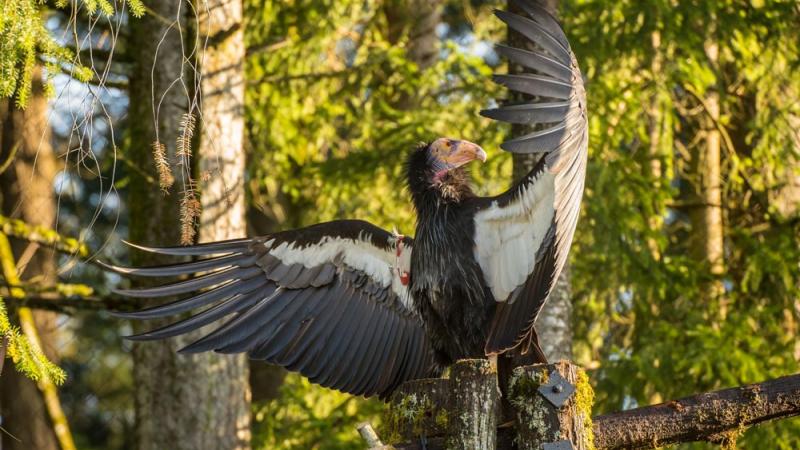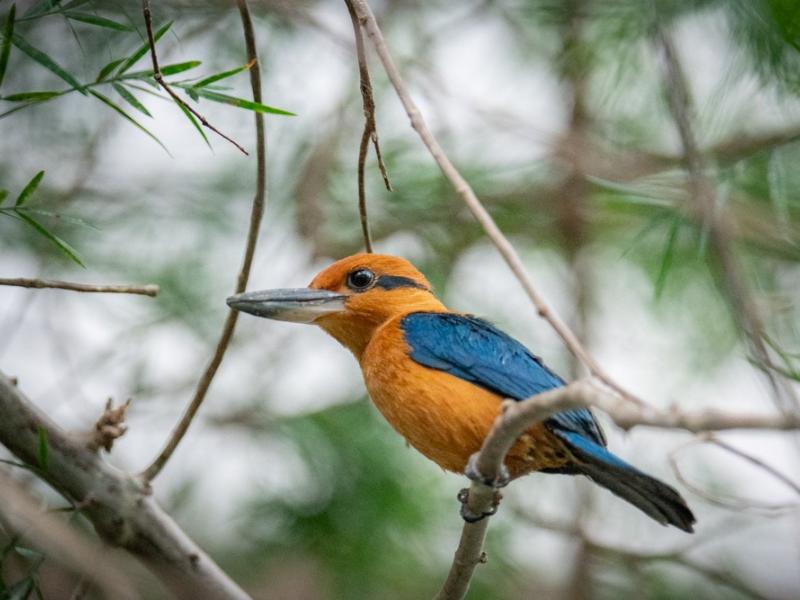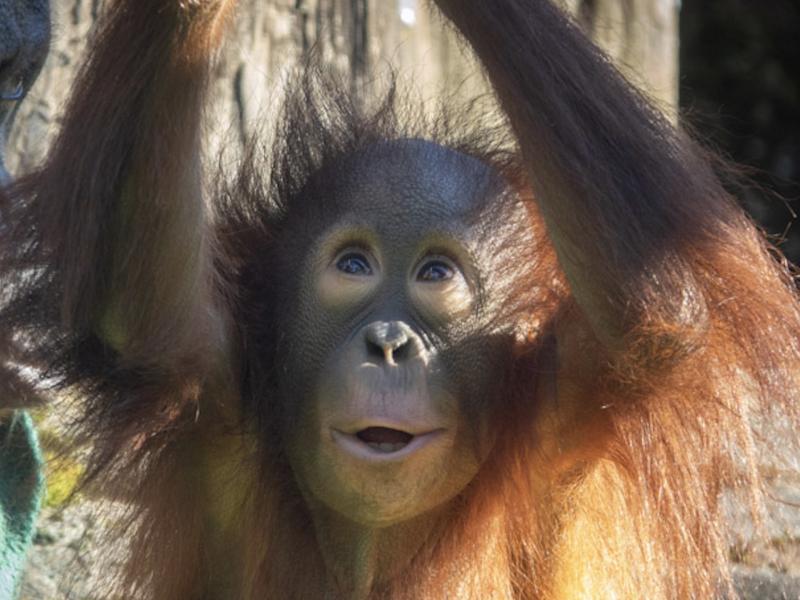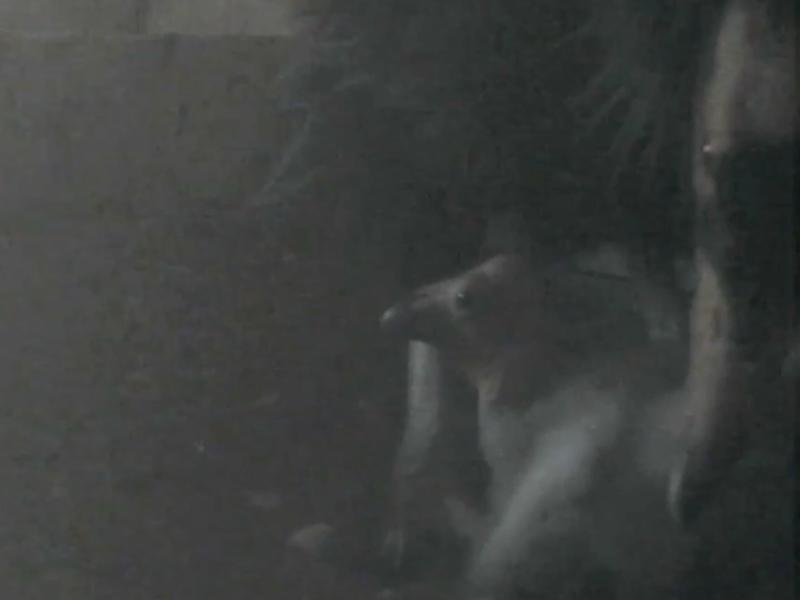Zoos rally to protect endangered condors from deadly bird flu

Oregon, L.A. and San Diego zoos aid U.S. Fish & Wildlife in historic vaccine trial
An emergency vaccine could help protect California condors against a virus that killed more than 20 of the endangered birds last spring. Early results released today from a historic clinical trial offer hope: 60% of condors receiving the vaccine produced measurable antibodies, which should provide some protection against highly pathogenic avian influenza, or HPAI.
The HPAI vaccine trial, the first of its kind for wild birds in the United States, was conducted by the U.S. Fish and Wildlife Service and three West Coast zoos — the Oregon Zoo, Los Angeles Zoo & Botanical Gardens, and San Diego Zoo Wildlife Alliance — all longtime partners in the federal California condor recovery program.
“The importance of finding a vaccine that’s effective in protecting California condors cannot be overstated,” said Dr. Carlos Sanchez, director of animal health at the Oregon Zoo. “This is a species that not long ago was on the very brink of extinction. Just over 300 individuals exist in the wild — and this year, in a matter of weeks, HPAI wiped out 21 of them. If left unchecked, the disease could undo decades of conservation work in the blink of an eye.”
HPAI is typically spread by wild birds during seasonal migrations. Following an outbreak among free-flying condors in Arizona this spring, the USDA approved emergency use of the vaccine for a pilot study. Once final results are evaluated, officials will decide whether to vaccinate wild condors.
“Collaboration with our zoological partners has been vital for the implementation of this trial,” said Ashleigh Blackford, California Condor Recovery Program coordinator for the Fish and Wildlife Service. “None of this important work would be possible without the collaboration from all our partners.”
Condors from the three zoos were selected to take part based on their age, sex, genetics and other factors. The trial tested two vaccination approaches: a single dose (1 ml) and an initial dose with a booster shot (0.5 ml on two occasions). Using an antibody detection test, USDA scientists evaluated the birds’ immune response to the vaccine.
The vaccine trial started with a surrogate species, black vultures. This initial test, hosted at the Carolina Raptor Center in Huntersville, N.C., signaled the vaccine was safe for vulture species. Veterinarians from the Fish and Wildlife Service and L.A. Zoo then vaccinated three California condors to check their response. After confirming no adverse reaction, all three zoos vaccinated the birds taking part in the trial. The vaccine used in this trial was developed and manufactured by the animal health company Zoetis.
At the Oregon Zoo’s veterinary medical center, four condors received an initial vaccine dose plus a booster. Five more birds served as a control group at the zoo’s offsite condor recovery center.
“California condors exist today because of a powerful conservation partnership and our communities’ commitment to their survival,” said Travis Koons, who oversees the zoo’s bird populations and northwest species recovery efforts. “An incredibly dedicated, talented team has once again come together to take action in crisis, giving me hope that even as new threats emerge, we’ll be able to ensure the long-term survival of this majestic species.”
For more information on the vaccine trial and HPAI’s impact on condors, visit fws.gov/program/california-condor-recovery/southwest-california-condor-flock-hpai-information-updates-2023.
The California condor was one of the original animals included on the 1973 Endangered Species Act and is classified as critically endangered. In 1982, only 22 individuals remained in the wild and by 1987, the last condors were brought into human care in an attempt to save the species from extinction. Thanks to a coordinated recovery effort, the world’s California condor population now tops 500 birds, with most flying free.
The Oregon Zoo’s condor recovery efforts take place at the Jonsson Center for Wildlife Conservation, located in rural Clackamas County on Metro-owned open land. The remoteness of the facility minimizes the exposure of young condors to people, increasing the chances for birds to survive and breed in the wild.
Over the past 20 years, condors at the Jonsson Center have laid 163 eggs, 109 have hatched, and 85 birds have been released to sites in Arizona and California with more scheduled for wild release this fall.
Lead poisoning remains the greatest threat to condors, and has long been recognized as a hazard to humans and other wildlife. Through education and outreach, the Oregon Zoo’s non-lead outreach program aims to inspire hunters and other outdoor users — traditionally some of the strongest supporters of wildlife and habitat conservation — to continue that legacy by choosing non-lead ammunition.
More News

Zoo welcomes ultra-rare sihek kingfishers
The Oregon Zoo is home to many critically endangered species, but perhaps none as rare as its newest arrivals: a trio of sihek kingfishers.April 25, 2024

Jolene turns 2: Zoo to celebrate orangutan's 2nd birthday
The littlest member of the orangutan family is celebrating a big milestone this week: Jolene will turn 2 on Saturday.April 12, 2024

Seven chicks and counting: Zoo welcomes first condors of 2024
Seven fluffy chicks hatched last month at the Oregon Zoo’s Jonsson Center for Wildlife Conservation.April 5, 2024

